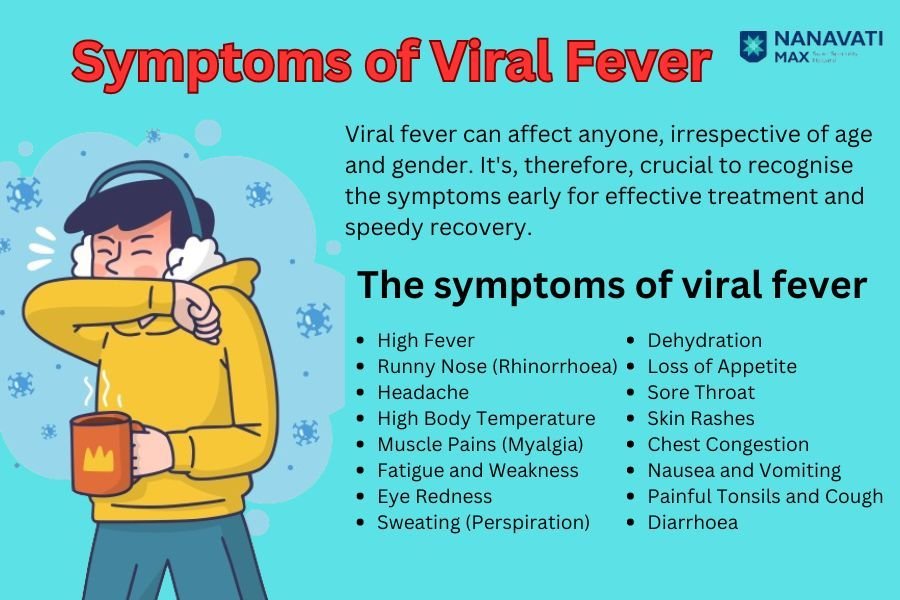Viral fever is a common ailment that affects millions of people worldwide. Often caused by viral infections, this fever can lead to a range of symptoms that may vary in severity. Understanding viral fever symptoms is crucial for early detection and effective treatment. This article will explore the causes, common symptoms, diagnostic methods, and treatment options for viral fever.
Introduction
Viral fever symptoms can range from mild to severe, depending on the type of virus and the individual’s immune system. Fever is the body’s natural response to infection, as it attempts to fight off the invading virus. However, not all fevers are caused by viral infections. It’s essential to recognize the specific symptoms associated with viral fever to ensure proper care.
Common Causes of Viral Fever
Viral fever is caused by various viruses that infect the body. Some common viruses responsible for viral fever include:
- Influenza Virus
- Dengue Virus
- Enterovirus
- Respiratory Syncytial Virus (RSV)
- Epstein-Barr Virus
These viruses can be transmitted through contact with infected individuals, contaminated surfaces, or even airborne droplets.
Key Viral Fever Symptoms to Watch For
Identifying viral fever symptoms early can help in seeking timely medical attention. Here are some of the most common symptoms:
1. High Body Temperature: One of the primary viral fever symptoms is a sudden rise in body temperature. The fever may range from 100°F to 104°F or higher, depending on the severity of the infection.
2. Chills and Shivering: Accompanying the fever, individuals may experience chills and shivering. This is the body’s way of generating heat to combat the infection.
3. Headache: A persistent headache is a common symptom of viral fever. The headache may be mild to severe, often worsened by movement or light.
4. Fatigue and Weakness: Extreme tiredness and weakness are typical viral fever symptom. The body’s energy is focused on fighting the infection, leading to a feeling of exhaustion.
5. Muscle and Joint Pain: Muscle aches and joint pain are frequently reported by those suffering from viral fever. This discomfort can be debilitating, making it difficult to perform daily tasks.
6. Sore Throat and Cough: In some cases, viral fever is accompanied by a sore throat and cough. These symptoms are often seen in respiratory infections like influenza.
How to Diagnose Viral Fever
If you suspect you have viral fever symptom, it’s essential to consult a healthcare provider. Diagnosis typically involves:
- Physical Examination: Checking for common viral fever symptom like a high temperature, sore throat, and muscle pain.
- Blood Tests: To identify the virus and rule out bacterial infections.
- Throat Swab: In cases of respiratory symptoms, a throat swab may be conducted.
Treatment Options for Viral Fever
Viral fever often resolves on its own with rest and hydration. However, some treatments can help alleviate viral fever symptom:
- Over-the-Counter Medications: Paracetamol or ibuprofen can reduce fever and relieve pain.
- Hydration: Drinking plenty of fluids is crucial to prevent dehydration.
- Rest: Allowing your body to rest helps it recover faster.
- Warm Compress: A warm compress can soothe aches and reduce fever.
Conclusion
Viral fever is a common condition that can be uncomfortable but is usually manageable with proper care. Understanding the symptoms and taking the necessary precautions can help you recover more quickly and prevent complications. If you experience severe symptoms or have underlying health conditions, it’s important to seek medical advice to ensure proper treatment.
Read Also:-
